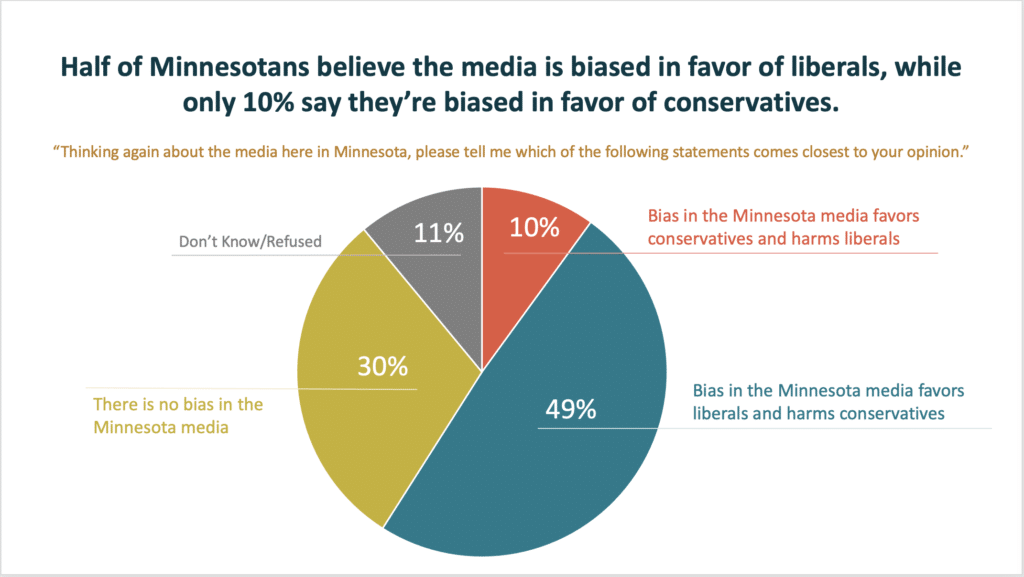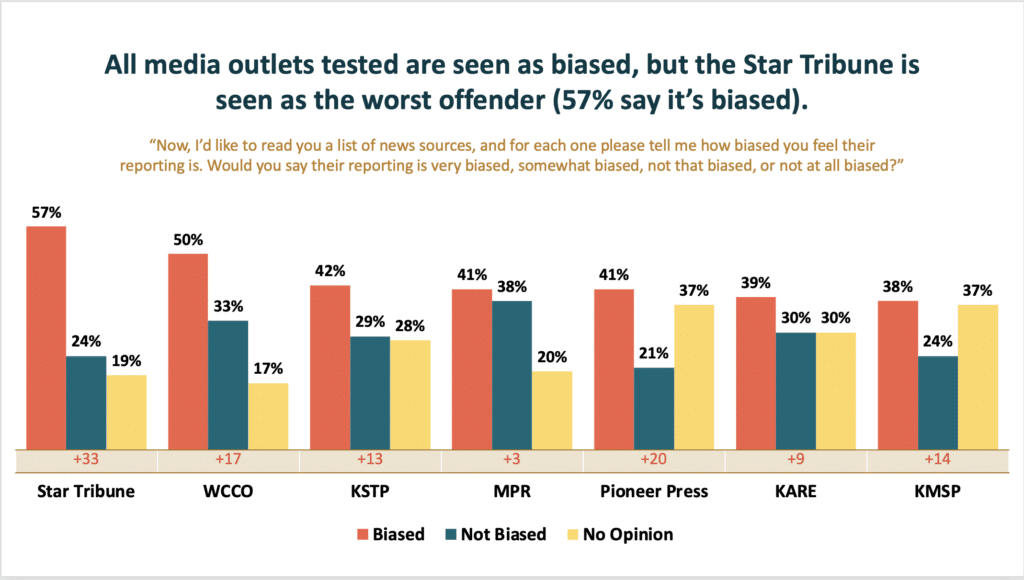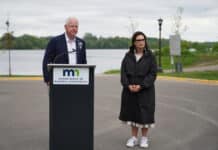Minnesotans widely believe local media outlets and their reporters are biased and skew the facts to fit a narrative, according to a recent poll from the Center of the American Experiment.
The Thinking MN Poll, conducted by Meeting Street Insights, surveyed 500 Minnesota residents on the role of bias in the state’s local media.
The results show that almost half of Minnesotans, at 49%, believe local media “favors liberals and harms conservatives,” according to American Experiment.
Ten percent believe the media favors conservatives, while 30 percent see no bias.

Breaking the results down by political affiliation, 82% of Republicans said the media favors liberals, while only 18% of Democrats said the same.
Only 7% of Republicans believe bias in state media does not exist, while 55% of Democrats say there is no bias in state media.
Two-thirds of residents believe the media adds to the “polarization” in the state, while 52% believe individual reporters “misrepresent the facts to fit their own narrative.”
“After two years of defund the police, race riots and toxic politics, most say the state’s news media isn’t being Minnesota nice (or fair) to conservative and Republican viewpoints,” Meeting Street Insights President Rob Autry said.
The Star Tribune is largely seen as the most biased news outlet in the state, with 57% of respondents saying that the paper is biased. WCCO comes in second with 50% of residents believing the channel puts out biased reports.

Looking at specific topics reported by the media, 58% of respondents said the media does not represent race fairly, and 55% said politics is also represented unfairly.
Fifty-one percent said public safety is, in fact, represented fairly, and 56% said education is fairly reported on as well.
However, only 16% of Republicans believe politics is covered fairly by the media, while 68% of Democrats think the same.
Minnesotans get their news by and large from television or online sources, at 51% and 48%, respectively. About 35% of respondents said they watch local TV news every day; 21% said they “never” watch the news.
These numbers broken down by age show that over 70% of those who said they get their news from local TV are over the age of 55. Only 29% of those aged 18–34 said television is their primary source of news.
“The audience for local television news is dying, perhaps literally,” American Experiment observed.
Facebook and Twitter are more prominent news sources for 18–34 year olds, with 69% saying online sources are their go-to for local news.


















